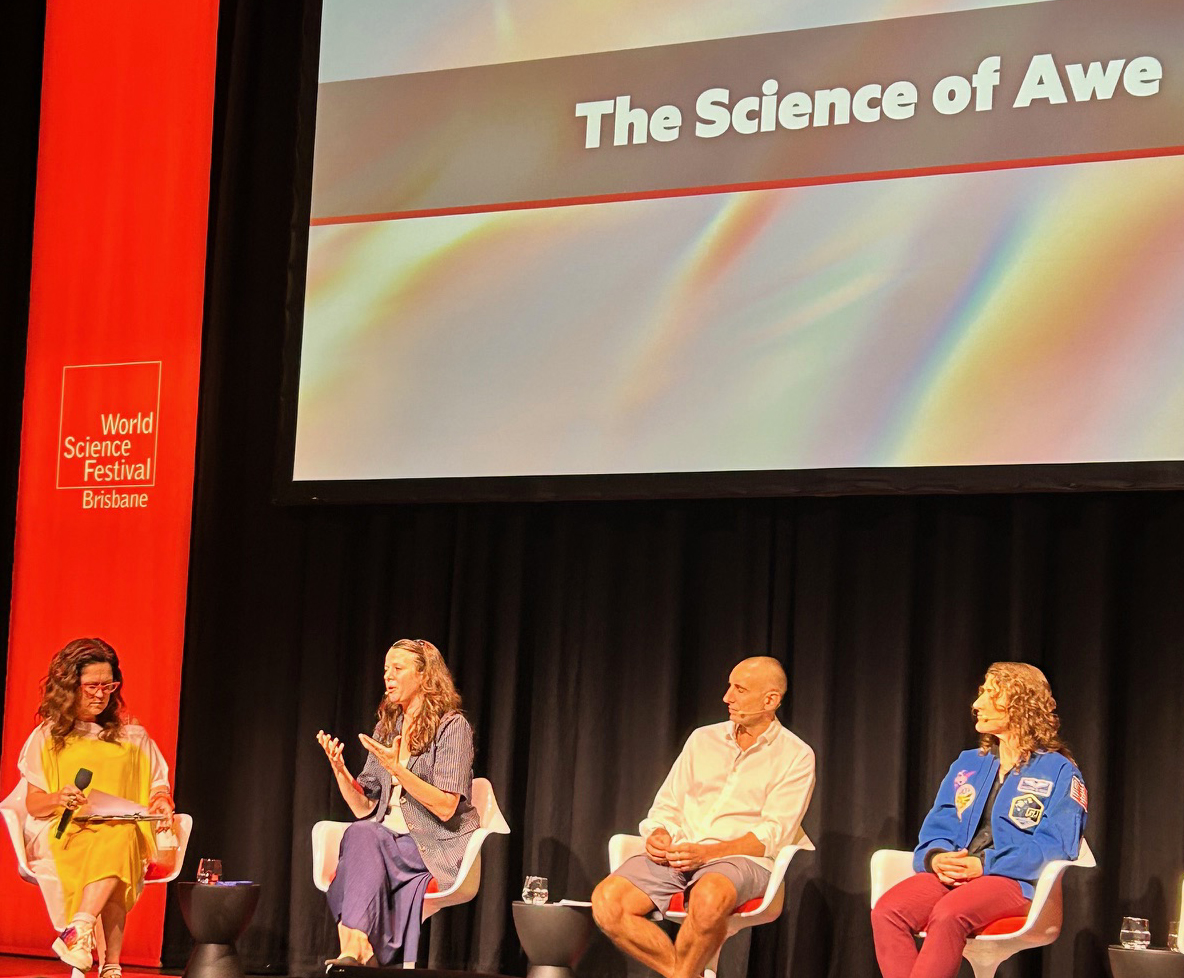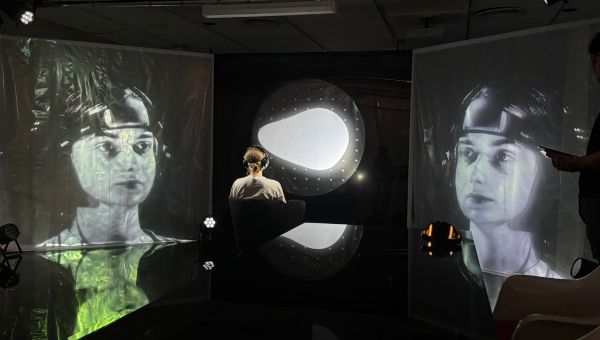What does awe do to our brains?
During the 2025 World Science Festival in Brisbane, Queensland Brain Institute researchers joined the conversation about the science of awe. The notion of ‘awe’ and its effects on the brain have fascinated scientists for decades.
On the Science of Awe panel, neuroengineer Dr Clarissa Whitmire shared the stage with clinical psychologist Dr Lee Kannis-Dymand, NASA Astronaut Christina Koch, and host Australian political journalist, commentator and TV personality Annabel Crabb.
The expert panel shared their experiences of awe – those transformative moments when your brain is astounded, and you become aware that you are lost in something bigger than yourself.

Dr Whitmire spoke about how the brain continuously builds a predictive model—a representation of the world based on the inputs we receive from navigating through life. When we experience something new, surprising, or profound, this predictive model is violated.
The panel discussed feeling small in the face of a profound experience, such as seeing the entire planet Earth from space, swimming in a vast ocean with the largest mammals or having a child. They also spoke about research showing that experiences of awe increase our altruism, kindness and humility.
What does science say about awe?
The concept of awe was introduced by referencing Professor Dacher Keltner, a psychology Professor at the University of California, Berkeley. In a paper entitled ‘The Science of Awe’ published by the Greater Good Science Centre at UC Berkeley, awe is defined as “the feeling of being in the presence of something vast that transcends your current understanding of the world.”
Kelter characterises awe experiences by two phenomena: “perceived vastness” and a “need for accommodation.” Perceived vastness can arise from being in the presence of something physically large and imposing, like the Grand Canyon or the pyramids, or from perceptual or conceptual vastness that can occur in the presence of genius or immense prestige.
With this perceived vastness comes the need for cognitive accommodation. When an experience violates our normal, predicted view or understanding of the world, it prompts our brain to adjust. If our expectations of a stimulus are unmet – vastness exceeds what we predicted – it provokes an attempt to adapt our mental structures. To make sense of this new experience, your concept of the world needs to expand.
The expert panel expanded on this definition by discussing how vastness can relate to size or complexity, like the multitude of circuits within the human brain, and that the experience of awe is particular to the individual. Even if you have planned, prepared and read about other people’s experiences, your experience may differ.
They shared that awe is perceived differently in different cultures. For example, in many Asian cultures, the definition of awe includes reverence or fear.
Overall, the panel agreed that awe shatters our expectations of the world.
Can we trigger awe?
Dr Kannis-Dymand aims to build a model of awe. His research involves showing people awe-inspiring experiences using video footage and VR and interviewing them afterwards to ask what they felt. This research involves depicting nature, extraordinary human endeavours and beauty to try to trigger awe. However, the experience is still limited.
Can we measure awe?
While over 50 research studies have considered the psychological effects of awe, the panel agreed it was a challenging area of study. The research shows common themes about its effects (see above). Still, there’s not yet an agreed approach to measuring its physiological effects on the body or mind. Most agreed it was a full-body experience – goosebumps, a racing heart rate, breathlessness or widened eyes. Dr Whitmire, whose focus is on the brain’s circuits, explained that there is not one, but many circuits in the brain impacted by an experience of awe, and the effect is highly individualised.
The Awe Experiment
The Awe Experiment was an interactive performance experience, developed by Brisbane artists, Counterpilot, as part of the World Science Festival, with input from scientists including Michelle Sands from the Whitmire lab. It was designed to interrogate awe.
A subject is chosen among the participants. This person had five primary brain waves tracked while they are exposed to auditory information that describes an awe-evoking scenario. The person is fitted with an electroencephalogram (EEG) headband and led into a meditative state.

Their brainwaves, as picked up by the EEG, are linked to lights, colour waves and soundscapes. So alpha waves are associated with a specific soundscape, colour wave, strip of light, beta – a different set of each, and so on. The remaining participants watch on as the subject is immersed in a scenario. At the height of the experience, we expect the subject to be experiencing awe, reflected by the change in lights and colours informed by their brain waves.
The experiment explores the idea that awe may not be just about the experience itself but rather the connections we make with other humans. Experiencing things together may be part of finding awe.
